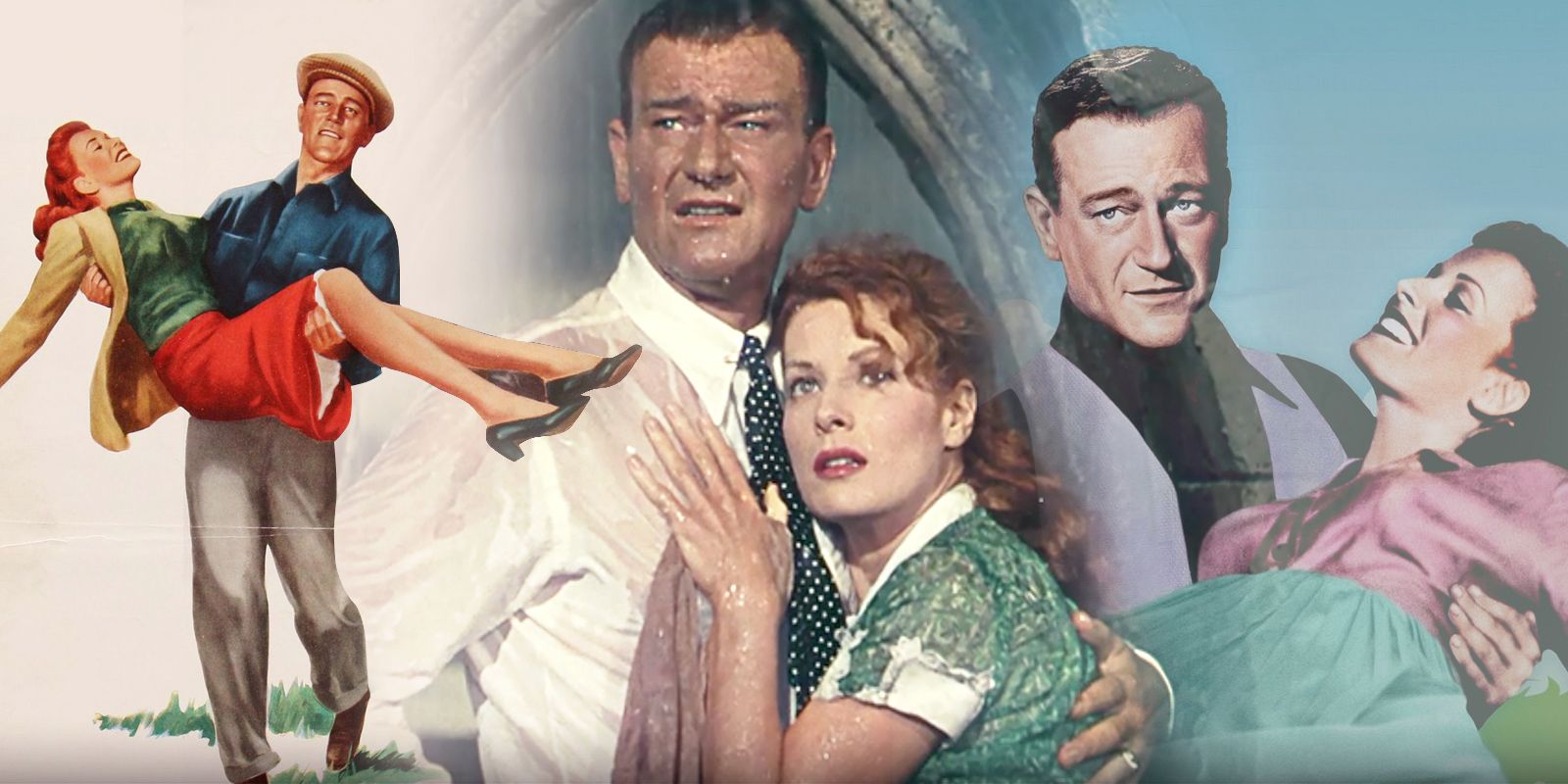
1952’s “The Quiet Man,” starring John Wayne, was somewhat unexpected given his rugged reputation and Western roles at the time. A romantic comedy-drama wasn’t quite what fans anticipated from The Duke. Set in Ireland, this film captured stunning, panoramic views of the country and portrayed a vanishing lifestyle in the Irish countryside. Essentially, it was a tribute to Ireland itself and the waning traditional ways. While contemporary viewers might perceive it differently, it retains a sentimental appeal for those who remember it from their childhood.
 Trump Tariff Shockwave: EUR/USD in Crisis Mode?
Trump Tariff Shockwave: EUR/USD in Crisis Mode?
Find out what experts predict for the euro-dollar pair this week!
View Urgent ForecastIn this film, “The Quiet Man,” which is the second movie featuring Wayne and co-starring Maureen O’Hara, they displayed a captivating onscreen chemistry that was both entertaining and electrifying. Not only does this classic movie reflect its era, but it also serves as an enduring delight for fans who appreciate Wayne’s acting range.
The Quiet Man Was a Different Type of Movie for John Wayne
By the mid-1950s, Wayne had already spent more than two decades in the motion picture industry. From his early beginnings, he was a regular in Western films like “The Big Trail” (1930) and “Stagecoach” (1939). War movies were also a frequent genre for him, with roles in “Sands of Iwo Jima” (1949) and “Operation Pacific” (1951). However, playing romantic roles and working on comedies like “Without Reservations” (1946) didn’t completely stray from Wayne’s comfort zone. But “The Quiet Man,” while still fitting within his range, was a distinctive film for him. This was a project that Wayne was deeply passionate about. In fact, he convinced his long-time collaborator John Ford to direct the movie at Republic Pictures, which earned Ford an Academy Award for Best Director.
Obtaining the rights for the movie “The Quiet Man” turned out to be quite straightforward. As per Maureen O’Hara’s account in her 2005 autobiography ‘Tis Herself, John Ford initially bought the rights for just $10 after reading the original short story. During his transition to Republic Pictures to direct the film, author Maurice Walsh was compensated an extra $2,500 and received a final $3,750 when the movie was eventually produced. It was only after Ford, O’Hara, and Wayne agreed to work on another Western together that Republic granted permission to start filming “The Quiet Man.” At that time, John Wayne’s Westerns were considered more profitable films compared to “The Quiet Man,” which later proved to be more successful.
The confidence of the Republic in “The Quiet Man” was demonstrated in various manners. At first, the studio required the film to be no longer than two hours. However, Ford devised his own strategy to persuade the studios that the movie required additional time to mature. During preliminary viewings with executives, Ford would deliberately halt the screening at precisely the two-hour mark, just before the iconic fight between Squire Will Danaher (Victor McLaglen) and Sean Thornton (Wayne). The executives were so captivated by the film at this point that they conceded and permitted the movie to maintain its extended runtime. Eventually, it became a cinematic masterpiece that spoke volumes about its high-quality storytelling all on its own.
| Academy Award Nominations & Wins for The Quiet Man | ||
| Category | Nominee(s) | Result |
| Best Motion Picture | John Ford and Merian C. Cooper | Nominated |
| Best Director | John Ford | Won |
| Best Supporting Actor | Victor McLaglen | Nominated |
| Best Screenplay | Frank S. Nugent | Nominated |
| Best Art Direction – Color | Art Direction: Frank Hotaling Set Decoration: John McCarthy Jr. and Charles Thompson | Nominated |
| Best Cinematography – Color | Winton C. Hoch and Archie Stout | Won |
| Best Sound Recording | Daniel J. Bloomberg | Nominated |
In addition to John Ford receiving an Academy Award nomination for Best Director in The Quiet Man, the film was also nominated for six other Oscars and won a total of two. Winton C. Hoch and Archie Stout were awarded Best Cinematography – Color for their work on the film. Critics also highly praised The Quiet Man, with A.H. Weiler of the New York Times calling it “one of the most charming pictures we’ve seen this year.” Harrison’s Reports described it as a “delightful and lively comedy-melodrama about Irish life, skillfully directed and enthusiastically acted by a talented cast.” Kay Proctor of the Los Angeles Examiner particularly noted John Wayne’s performance in the film.
It’s no shock that John Wayne shines once more, given his history under Ford’s guidance, he’s simply outstanding. What takes us by surprise is the knack for humor he showcases in this film…I can assure you, you haven’t seen a movie quite like this one before, and you won’t again unless you decide to watch it multiple times.
His ability to balance versatility and emotional depth, particularly in the movie “The Quiet Man,” resulted in one of his finest, yet surprisingly impactful performances in an unanticipated cinematic piece.
The Quiet Man Was Filmed on Location in Ireland
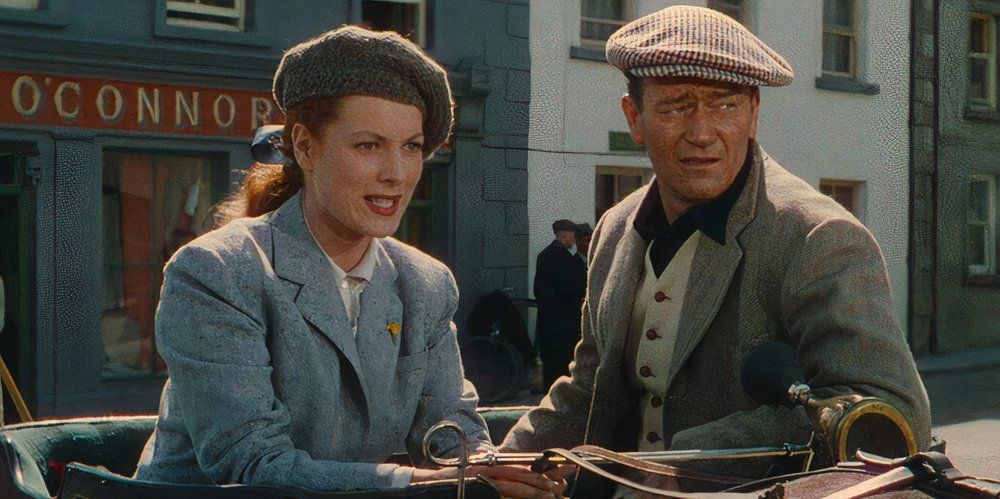
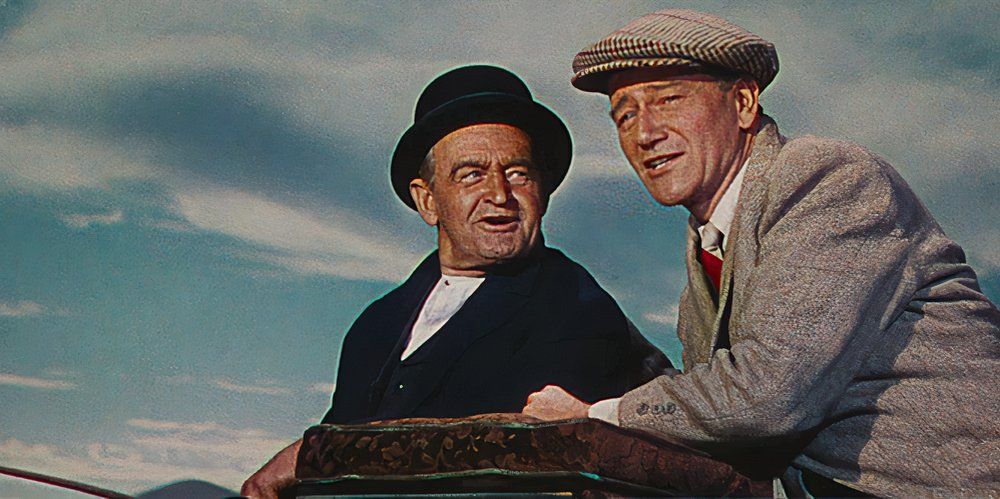
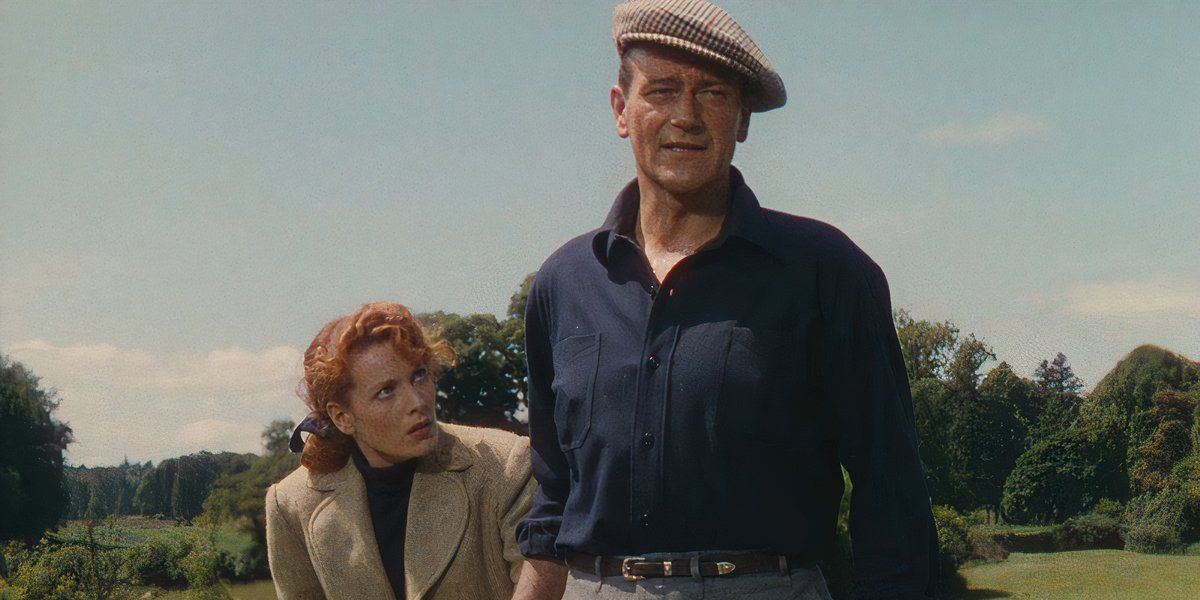
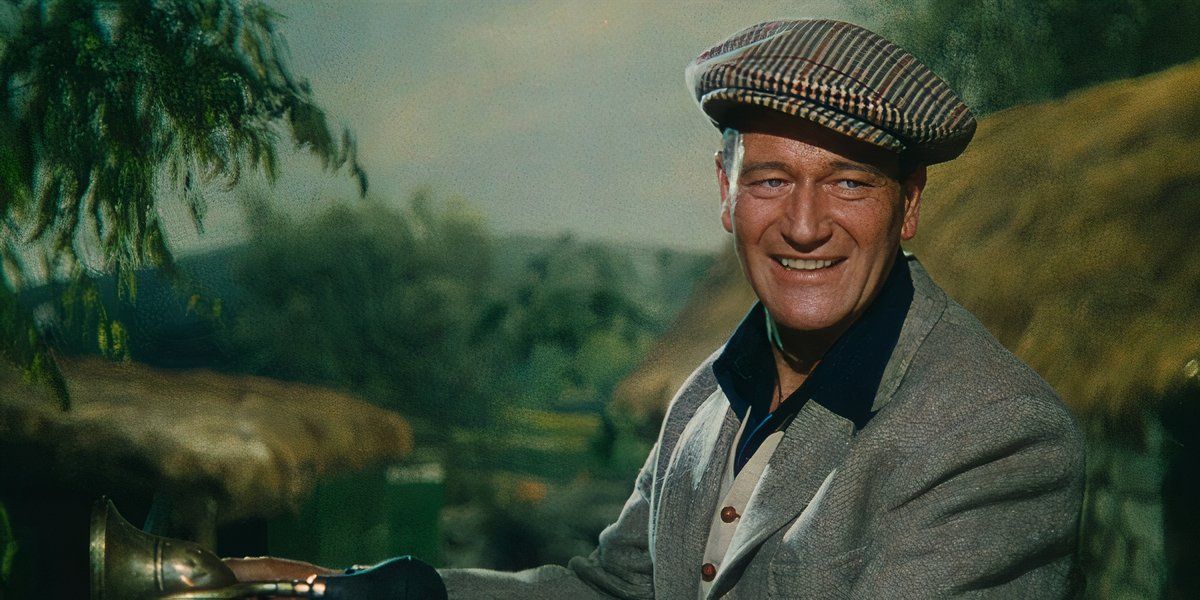
One unique aspect of the film “The Quiet Man” lies in its dedication to authenticity, particularly in its portrayal of Ireland as its backdrop. The movie was actually shot on-site in various locations across Counties Mayo and Galway. The village of Cong is one such location, which remains well-known for its association with the film to this day. This choice undeniably boosted the production cost and increased the risk for Republic Pictures. For the sake of authenticity, a fictional village named Inisfree was constructed, where Sean Thornton, played by John Wayne, returns as an adult after living in America following his early years on the Emerald Isle. He is warmly received upon his return and soon finds himself smitten with Mary Kate Danaher (O’Hara), a local spinster and sister of Squire Danaher.
Born in Dublin, this movie showcased other notable Irish figures. Barry Fitzgerald, an Irish actor renowned for his roles on stage, screen, film, and television, played Michaeleen “Óge” Flynn, the town’s matchmaker. Known for his skill in both dramatic and comedic performances, Fitzgerald shone particularly in his comedic role in this movie, providing an excellent contrast to characters like Squire Danaher. Fitzgerald’s real-life sibling, Arthur Shields, was also part of the cast. He portrayed Reverend Cyril Playfair, a Protestant minister who faced the possibility of being moved elsewhere if he didn’t manage to attract a sufficient number of followers in the village.
In contrast to Ireland’s scenic landscapes and panoramic vistas, just two weeks were allocated for filming in the country due to the local hotels being unable to accommodate the American cast and crew as stated by TCM.com. Today, visitors to Cong would find a 5-star hotel that is recognizable from the opening credits of The Quiet Man. A bridge leading towards the castle, where a scene was filmed with Michaeleen driving Mary Kate and Sean across it near Father Lonergan’s (Ward Bond) fishing spot, can also be found. Interestingly, the pub depicted in the movie was originally a grocery store, transforming into an authentic pub only in the early 2000s. Despite the close appearance of locations in the film, anyone aiming to visit all the shooting spots would undoubtedly require a vehicle given the expansive area that the production covered during its brief stay.
John Wayne’s The Quiet Man Is Problematic but Still Enjoyable
At the core of “The Quiet Man” lies a romantic tale about two souls deeply connected. However, certain aspects might raise eyebrows in today’s context. For instance, their relationship, which can be seen as physically intense, may seem controversial. Throughout the movie, Sean and Mary Kate often engage in rough play, culminating in a prolonged sequence where Sean forcefully throws Mary Kate at her brother Squire Dananger’s feet, symbolizing an attempt to dissolve their marriage in public. This act is significant because Sean, a man who abstains from fighting due to his past as a professional boxer where he accidentally killed someone, has avoided confronting her brother about the dowry until this point. The central conflict arises from the cultural divide between Mary Kate’s insistence on reclaiming her dowry and Sean’s American viewpoint that such matters are inconsequential.
If spectators only glance at the film superficially, they might find several elements questionable, particularly the scenes where physical interactions were used humorously. However, beneath this surface lies a more contemporary theme. As Molly Haskell puts it, “In typical American style, [Sean] questioned his masculinity and ability to provide for her, until she eventually helps him comprehend that it’s not the money but what it represents. The dowry and furnishings are her identity, her independence.
In a somewhat unexpected yet feminist portrayal for its time, Mary Kate in “The Quiet Man” was not depicted as an unpleasant shrew, contrary to popular belief. This characterization may seem unusual when considering the film’s release year of 1952. However, it is essential to recognize that some movies reflect their era and can still be valued for their merits. Indeed, “The Quiet Man” remains a favorite among modern viewers, as evidenced by its high approval rating on Rotten Tomatoes – an impressive 91% appreciation from both critics and audiences.
Read More
- We Loved Both of These Classic Sci-Fi Films (But They’re Pretty Much the Same Movie)
- Masters Toronto 2025: Everything You Need to Know
- Street Fighter 6 Game-Key Card on Switch 2 is Considered to be a Digital Copy by Capcom
- The Lowdown on Labubu: What to Know About the Viral Toy
- ‘The budget card to beat right now’ — Radeon RX 9060 XT reviews are in, and it looks like a win for AMD
- Mario Kart World Sold More Than 780,000 Physical Copies in Japan in First Three Days
- Valorant Champions 2025: Paris Set to Host Esports’ Premier Event Across Two Iconic Venues
- Microsoft Has Essentially Cancelled Development of its Own Xbox Handheld – Rumour
- Gold Rate Forecast
- Forza Horizon 5 Update Available Now, Includes Several PS5-Specific Fixes
2025-04-27 00:51